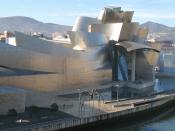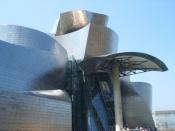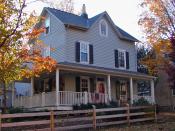Post-modern Ornament evolved from the modernist movement, 'modernism was unpleasant, meaningless joints together and marking functionalist boxes and crates defacing mile upon mile of the environment' , a "Fixed form" for example early 1950's the streets of London all buildings were rectangle no shapes at all, people who did not agree to such ideas of all architects being as fixed form, 'architects from all other countries bring regional and cultural characteristics of their countries' and New ideas of architects were born "post-modernism Ornament". Disagreeing to many of the modernist ideas and yet Combining new ideas with traditional forms, post-modernist ornament may shock, surprise, and even amuse. Familiar shapes and details are used in unexpected ways so the architects were constructed with new symbols to make a statement or simply to delight the viewer. Michael Graves is a profession about wood, bricks, stones, steel and glass. Robert Verturi designs for domestic household items and heavy wood construction.
Frank Gehry constructing curvaceous structures.
Robert Venturi was born in Philadelphia, Pennsylvania in 1925. He attended the Episcopal Academy in Philadelphia and graduated from Princeton University. Architecture is a profession about wood, bricks, stones, steel and glass. It is also an art form that is based on words, ideas and conceptual frameworks. Few architects of the twentieth century have been able to combine both aspects of the profession, and none have done so more successfully than Robert Venturi.
Fig. 1, Robert Venturi, Vanna Venturi House, at Chestnut Hill, Philadelphia, Pennsylvania, 1962One of his first projects to be built that captured the attention of the architectural community was a house for his mother in the Chestnut Hill section of Philadelphia, Pennsylvania. Venturi's first important project to be built was his mother's house, the Vanna Venturi House of 1961-1964. Disarmingly simple after the spatial antics...


